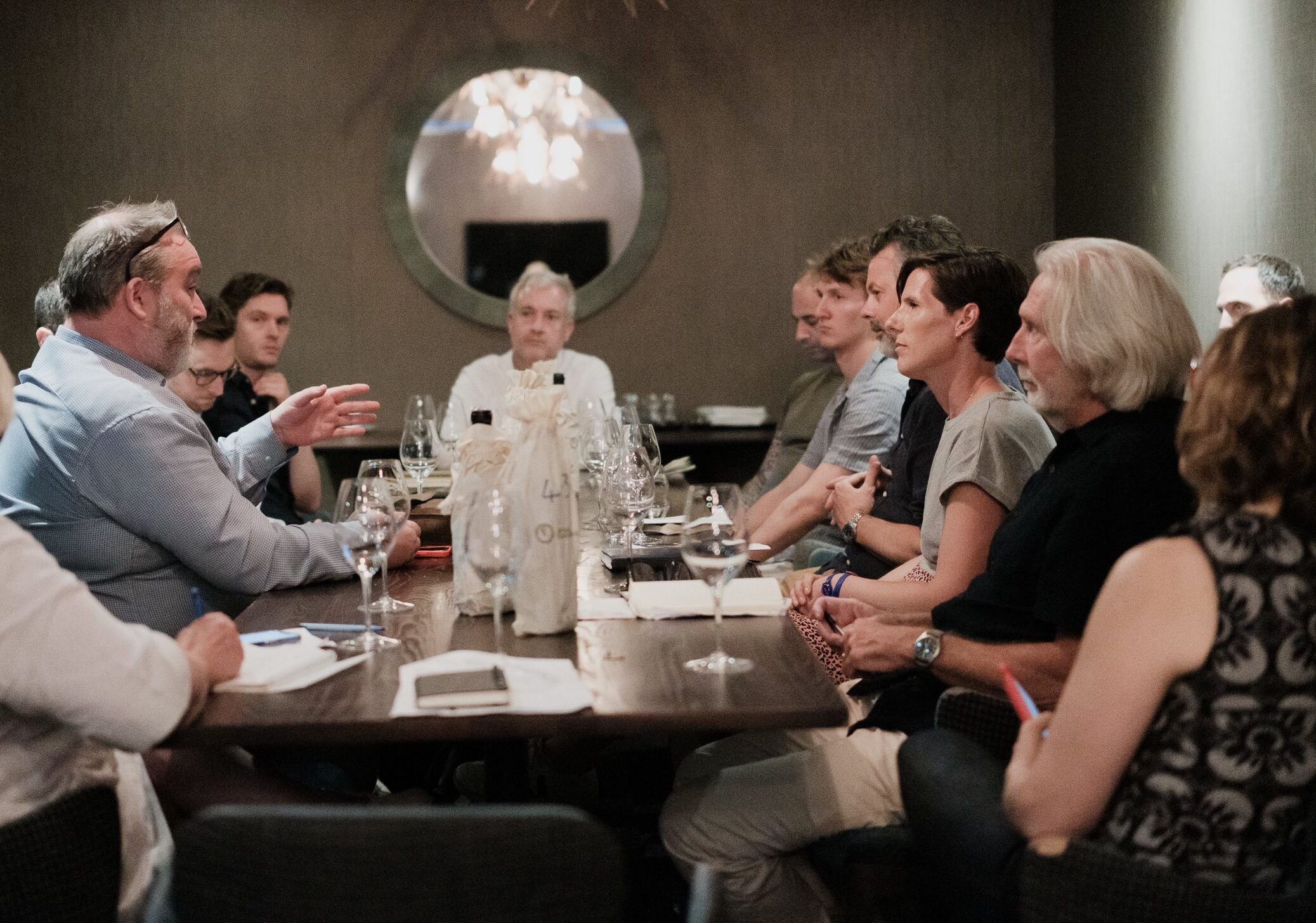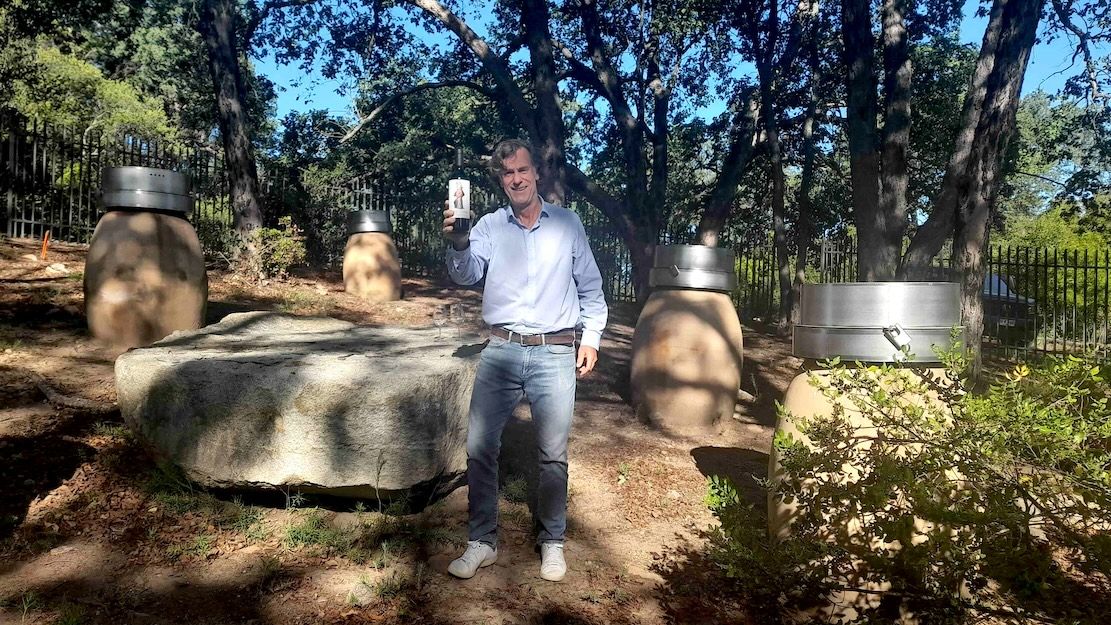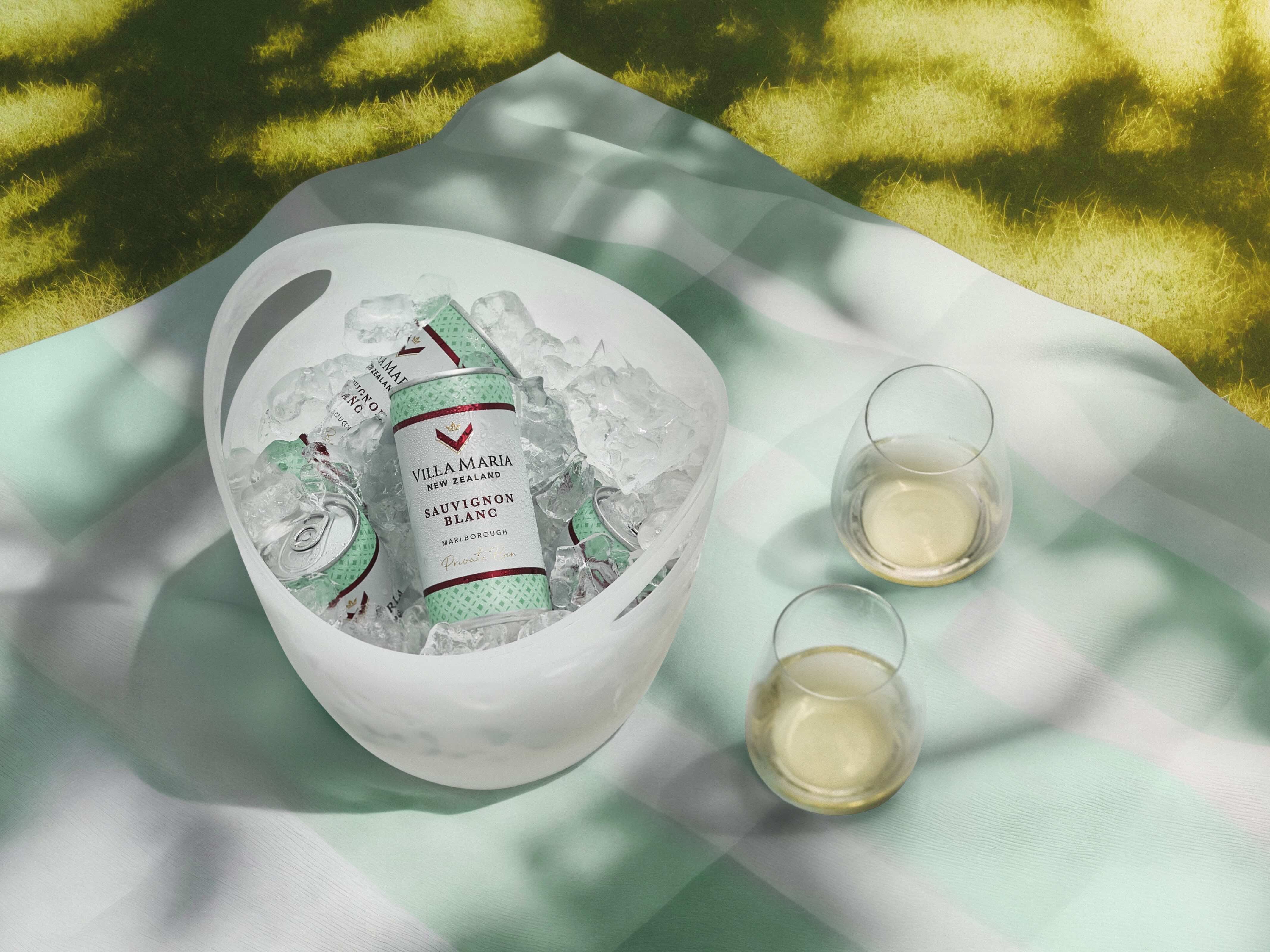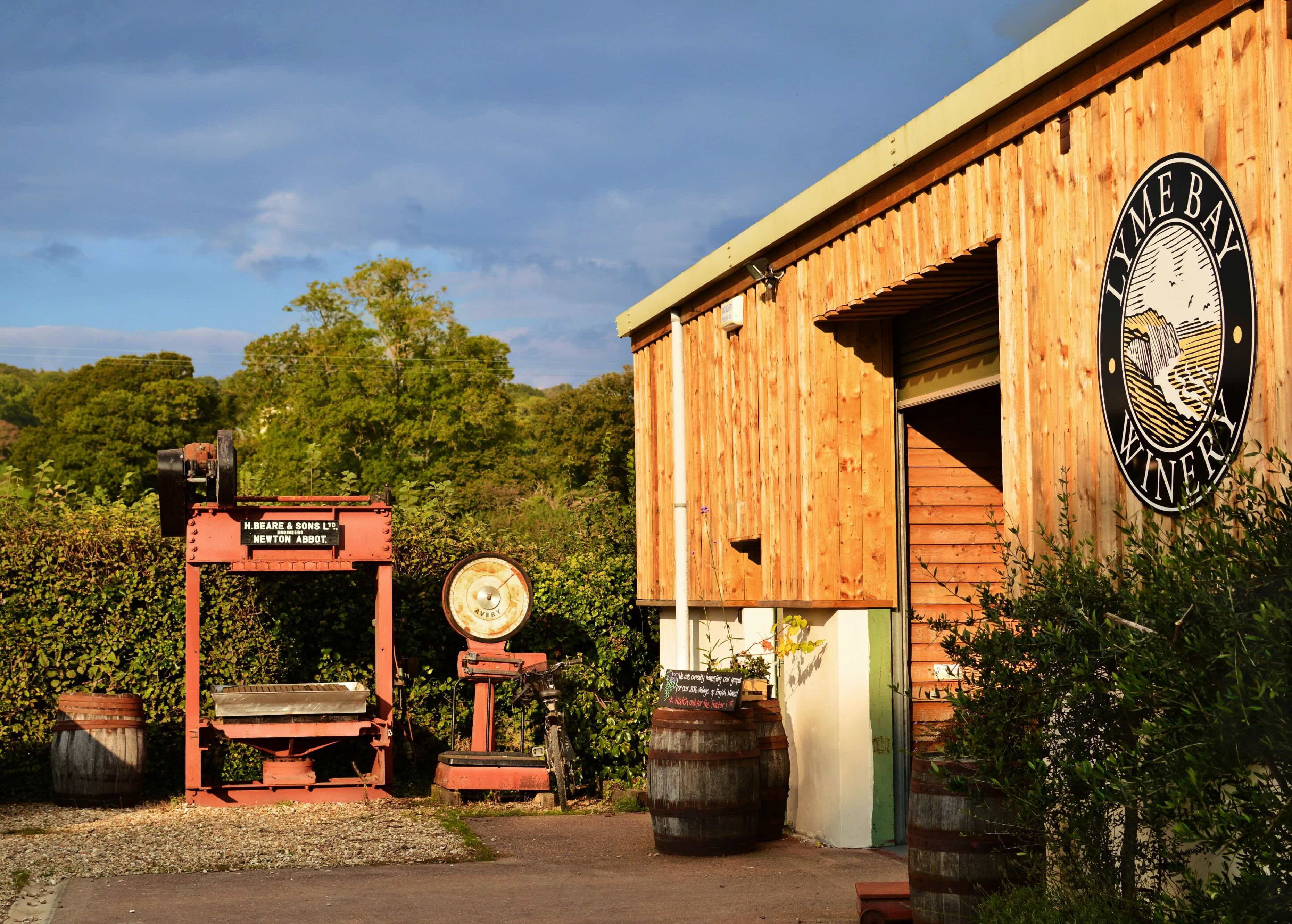The PDO Santorini buyers debate was held at M Threadneedle Street with funding from the European Union and Greece, as part of a wider campaign to promote PDO Santorini wines in the UK market. To find out more, visit @winesofSantoriniUK on Facebook and Instagram.

While almost every Greek island produces wine, few can match the respect and reliability of wines now being made in PDO Santorini that are turning the heads of sommeliers and leading wine buyers not just in the UK, but most premium wine markets around the world.
In fact it could be argued it is the innovative PDO Santorini wine producers, including a number of young winemakers, who have been at the vanguard of the overall wine revolution that is finally overturning decades of negative perceptions about Greek wine. Santorini’s handful of producers are collectively making top quality wines, particularly from its indigenous Assyrtiko vines that are more than a match for many internationally acclaimed wines.
The Buyer invited a group of top sommeliers, wine merchants, and leading distributors to an exclusive tasting and chance to assess the potential of the island’s wines in a panel debate featuring some of Santorini’s leading producers. The panel included:
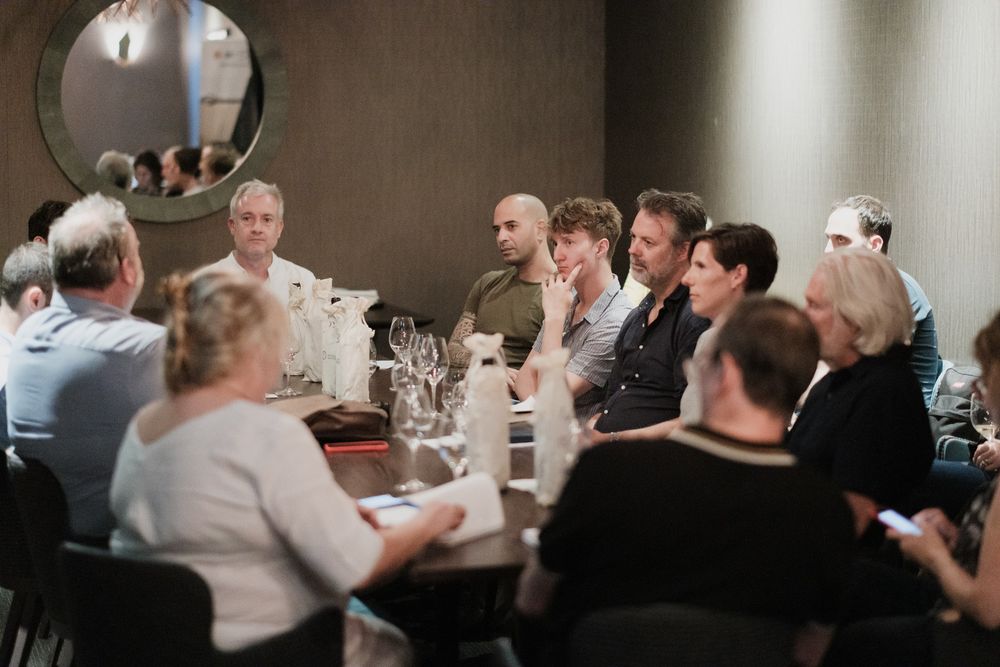
The panel included leading sommeliers, UK importers and major wine buyers with good experience of working with Santorini wines. Photograph Thomas Skovsende.
- Chair: David Kermode
- Steve Daniel, head wine buyer, Hallgarten & Novum Wines
- Andrew Johnson, managing director, Woodwinters
- Richard Lewis, Greek wine buyer, Enotria&Coe
- Lucie Parker, trade director, Jeroboams
- Jeremy Lithgow MW, head of wine at Amathus
- Flavio Pinto, sommelier at Bacchanalia
- Joshua Castle, head sommelier at Noble Rot
- Mattia Scarpazza, sommelier, 67 Pall Mall
- Klearhos Kanellakis, head sommelier, Ekstedt at the Yard.
- Sofia Perpera, chemist and oenologist with Wines of Santorini and the Greek Wine Federation
PDO Santorini’s wines are the jewel in the Greek wine firmament,” claims Steve Daniel, Hallgarten’s head wine buyer and long-time champion of the island and its wines.
“In terms of their style they are exactly what the consumer wants – if they are prepared to pay the money which is another matter entirely. They are crisp, intense, minerally with long flavours – basically everything Chablis used to be before global warming, and isn’t any more. So I think style-wise they are perfect and for sommeliers probably the most food-friendly wine there is. They can go with oysters and other seafood, but also stand up to more robust fatty pork dishes.”

Hallgarten’s Steve Daniels is so convinced by the potential of Santorini and its wines he has bought a house on the island. Picture Thomas Skovsende
And Daniel certainly puts his money where his mouth is, having been largely responsible for championing Greek wine in the early days and helping to put them on the map – as well as owning a house on Santorini for nearly 20 years.
The island is the ultimate dream holiday destination for many, with its otherworldly dazzling caldera, blue domed churches and awe-inspiring sunsets attracting over two million tourists a year, far outnumbering the 15,500-odd permanent residents.
Considered to be the cradle of wine production, Santorini has a winemaking history stretching back nearly 3,500 years. The key grape varietal used in the production of PDO Santorini wines is Assyrtiko, which is ideally suited to the island’s volcanic terrain and hot, arid climate.
This indigenous grape accounts for around 85% of total production, which last year weighed in at approximately 2.25m litres of wine. Other white grapes grown on the island include Athiri and Aidani, both of which are indigenous to Santorini, and are often used in small quantities to blend with Assyrtiko.
“It’s the oldest vineyard on the planet, which is a great selling point for anyone wanting to sell PDO Santorini wines,” adds Daniel, pointing out some of the vines are up to 400 years old, with continuous root systems which are allowed to reseed and rebranch.
Growers, he explains, don’t prune the vines in the traditional way, but instead employ a more ancient technique, called kouloura, that allow the vines to bunch up into “nests” which help to protect the vines and grapes from the sun and strong winds, while also capturing moisture from sea mists, vital in this arid climate.

Steve Daniel with Sofia Perpera, chemist and oenologist with the Greek Wine Federation and Wines of Santorini. Photograph Thomas Skovsende
While the age of the vines above ground is mainly between 80 to 100 years, Daniel says their roots could be millenia old. “I have a theory that Assyrtiko was brought to Santorini by the Phoenicians in about 1000 BC, the first to reinhabit the island following the volcanic eruption,” he says, adding that wine production in PDO Santorini is unique and something that needs to be cherished.
“It has been the torchbearer for Greek wines in the 25 years I’ve been bringing Greek wines to the UK and trying to sell them – though it’s a much easier sell nowadays. And we all know that it’s not technical data that sells wines but a good story – and Santorini certainly has a great story.”
PDO Santorini’s unique style
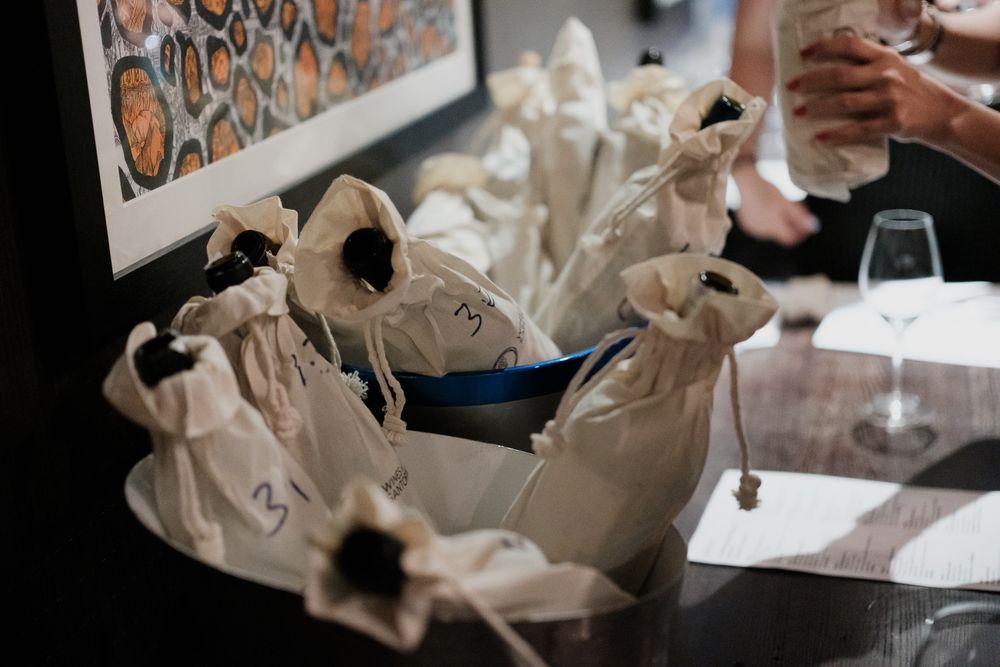
The buyers and sommeliers had a chance to taste a range of wines to showcase the PDO and its different styles. Photo Thomas Skovsende
Typically dry, Santorini wines possess high acidity and a mineral character that is often described as “volcanic.” Known for their crisp, refreshing taste and their ability to pair well with a wide range of foods, from seafood to roasted meats.
Santorini, which only measures 18 km by 12 km at its longest and widest points, also produces Vinsanto, which is made from sun-dried grapes and aged in oak barrels for several years before bottling.
With only around 20 producers on the island, and with land at a premium any further expansion of existing vineyards or planting of new ones is severely restricted. And competition is fierce for any land which does become available, not just from aspiring winemakers, but also developers keen to get their hands on land on which to build more hotels and villas to satisfy the burgeoning tourist demand.
Annual production hovers consistently around 2.5m litres a year, of which approximately 35- 40% is exported, conspiring to push prices up as demand exceeds supply.
“Prices of grapes have, quite rightly, gone up from around 50 cents a kilo back in the day to over €5 a kilo,” says Daniel. “And they are very phenolic grapes so you don’t get that much juice out of them. They are undoubtedly expensive.”

Woodwinters’ Andrew Johnson and Jeroboams’ Lucie Parker both see a strong future for Santorini in premium on-trade and speciality wine merchants
Such pricing means much of PDO Santorini’s wines exported will be destined for the retail sector rather than hospitality, claims Andrew Johnson at Woodwinters, one of Scotland’s leading distributors, with a strong London office now too.
“There are two markets here really – those wines which retail at up to around £35, which would be marked up to about £110 in a restaurant, and then those ultra- premium cuvees which retail at £80 but would be priced up to around £200 in a Michelin-starred restaurant,” he says.
That is not something that producers automatically understand, he stresses, as margins charged by restaurants in Europe are much lower than in the UK. “Something that costs €60 there could be priced at €180 here.”
Johnson, however, believes the high prices are justified thanks to the overall quality of PDO Santorini’s wines. “In retail terms, you can get a good bottle of Assyrtiko from around £20, while some of the top estates sell for up to £100 a bottle. While consumers might say – wow, a hundred quid for a bottle of Greek wine, I say well look at what you can get from Burgundy for that amount – sadly not very much, or certainly a lot less than four or five years ago.”
He believes it is time to change the narrative and to win over those consumers who traditionally wouldn’t imagine spending that kind of money on Greek wine.
“While 20 years ago the quality of some of the wines was not where it is now, the intrinsic quality of the wines now compare favourably to anything else in the world – they are absolutely outstanding,” he adds. “I really believe if you look at the quality of these wines with others at a similar price such as Californian Chardonnay or top Burgundy or Rieslings I think that the wines stand up to those price tags. PDO Santorini Assyrtiko gives you this amazing body, freshness, salinity and electricity all in one, which very few other white grape varieties do for me – It is definitely a unique grape variety on many levels so we just need to educate sommeliers and consumers that these wines are worth the money.”
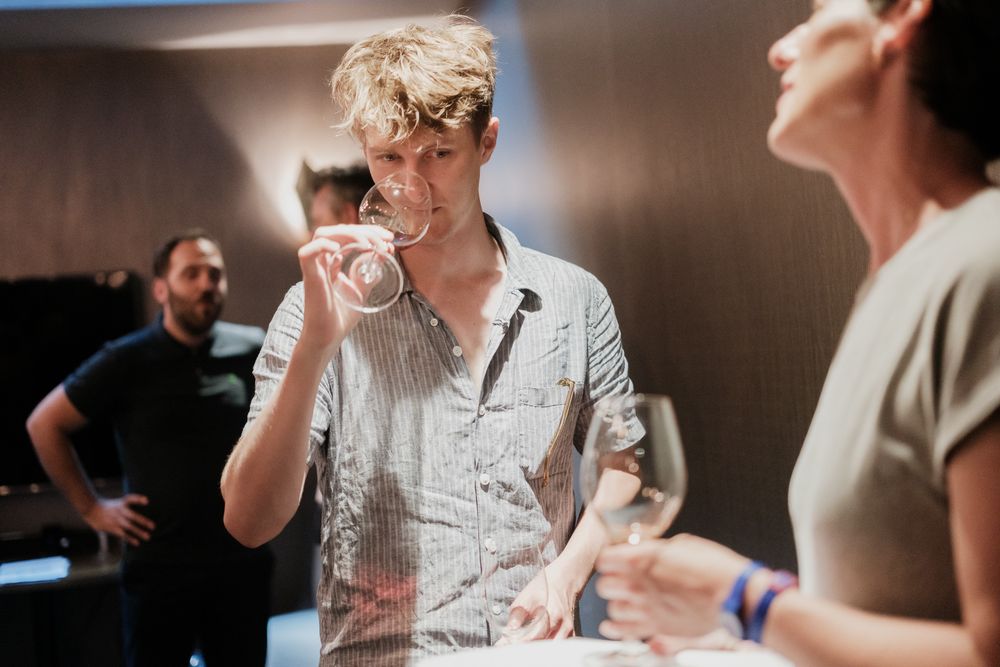
Noble Rot’s head sommelier Joshua Castle has long been a fan of Santorini wines. Photo Thomas Skovsende
One sommelier who needs no introduction to the attraction of PDO Santorini’s wines is Noble Rot’s Joshua Castle, who believes that Assyrtiko is so strongly associated with the island that he says “it’s difficult to think of one without the other.”
He reports growing interest in Greek wines over the past five years, both at the restaurant, where they are priced at between around £65 – £100, and the company’s retail arm, Shrine to the Vine, an enthusiasm which he says has been spearheaded by PDO Santorini wines.
“Without a doubt Santorini’s Assyrtiko has all the hallmarks of being a fine wine; complex, richly structured wines that transmit a sense of place. The concentrated flavours and high acidity make these wines compelling, but ultimately they are mostly suited to a niche, highly engaged audience – these are not easygoing every- day wines.”
Demand exceeds supply
With producers only exporting around 20-40% of what they produce, there is not very much wine to go around its key markets, with demand outstripping supply in Germany, the US, Canada and the UK, its biggest export markets.
The bulk of PDO Santorini’s production, however, is still sold within the domestic market, where there is more than sufficient demand for the island’s entire output. But producers realise they need to balance home sales with the growing reputation that its export sales help deliver.
Johnson says it’s all about building prestige. “Yes, they could sell all their wine at home if they wanted to, but they like to see their wines on wine lists in Tokyo and London and New York. They are pushing exports for the good image it brings.”
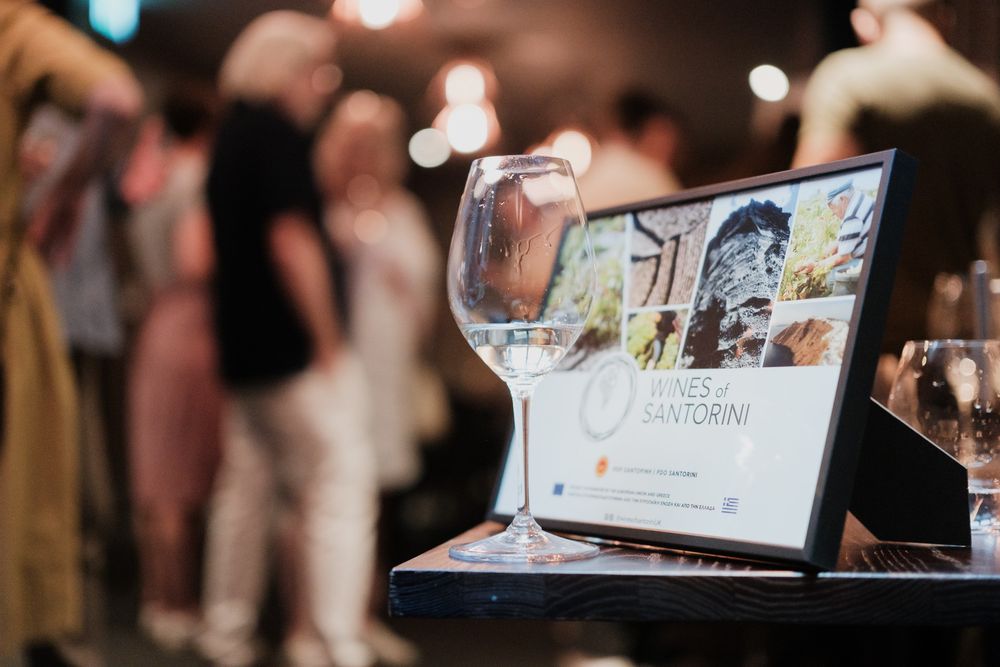
The growth in tourism in Santorini means only up to 40% of what is produced on the island is currently going to its key export markets. Photo Thomas Skovsende
While there is some understanding of the premium status that PDO Santorini’s wines command, Jeroboams’ trade director Lucie Parker believes the wines are still “definitely” a hand-sell. “We have got to have someone asking specifically for Greek wine, or alternatively open to trying something new. While our customers will spend more with us than at the average retailer, they are still quite classic in their tastes.”
And Castle agrees: “The small scale production, with low yields and high demand, means that volumes of wines from PDO Santorini will never be huge. I think this plays into the unique style of wines produced on the island, and leads them to be a great hand-sell to adventurous drinkers
Which is why the current shortage of Burgundy, along with its rocketing prices, presents the perfect opportunity for PDO Santorini’s wines to fill the gap, he claims. “We have been talking to people about alternatives to Burgundy. It’s definitely time to start talking about other varieties and opening their eyes to other countries.”
What PDO Santorini stands for
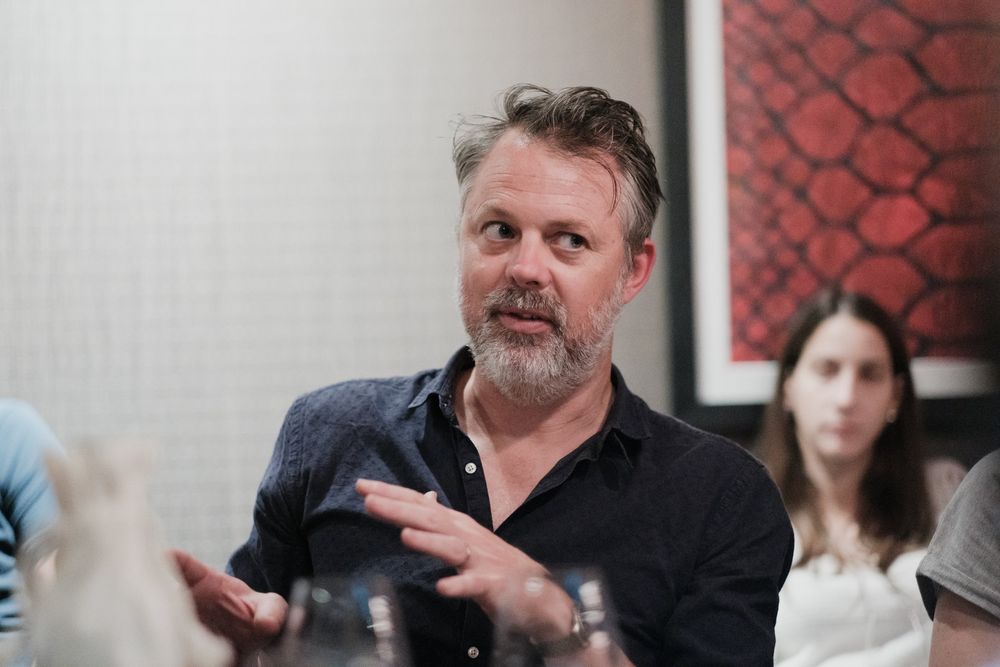
Amathus’ Jeremy Lithgow MW says the tourism to Santorini can only help its profile and demand for its wines in its key markets like the UK
Jeremy Lithgow, MW, head of wine at importer and specialist retailer, Amathus, agrees the opportunity is definitely there for PDO Santorini, particularly on the back of how popular Greece has become as an increasingly premium holiday destination. That can only help boost the country’s wine industry as a whole, he adds.
Lithgow is also quick to point out that Assyrtiko is not exclusive to Santorini, but is also making its name on other Greek islands as well as on the mainland and across Central Greece.
He doubts whether consumers see Santorini as a separate entity within the greater sphere of Greek wine. “In the trade we recognise that wine from PDO Santorini as the standard bearer for Greek wine, but I am not sure that consumers see that distinction,” he says, adding that many consumers are pleasantly surprised when they are persuaded to try Greek wine for the first time.
“If they haven’t drunk it since the days of filthy old retsina, and they are offered something crisp and aromatic instead, they love it,” he says.
Noble Rot’s Castle believes wine aficionados are certainly aware of the distinction between wine from Santorini and from the rest of the country. “I think that Assyrtiko from PDO Santorini has found its way into the conversation amongst fine wine drinkers who appreciate the way it transmits its sense of place so well,” he claims.
“Santorini’s Assyrtiko is definitely a wine drinker’s wine, it is not so much something to pop into the fridge and have in a casual setting. Something else pulling these wines away as a value proposition for drinkers in the context of Greek wines in general is the elevated alcohol levels [typically around 14% abv] and the yields are exceedingly low, which is a challenge for this category.”

Enotria’s Greek wine buyer Richard Lewis says the country as a whole has benefited from the impact that Santorini has had on the wine market. Photo Thomas Skovsende.
Richard Lewis, Greek wine buyer at Enotria, believes the Greek wine category as a whole has benefited from the “halo effect” supplied by PDO Santorini. “Mainland Assyrtiko can be very good, and can be commercially well priced, but there is nothing like the sense of place you get from Santorini,” he says.
Education is key
Jeroboams’ Parker believes Santorini’s wine industry has done a pretty good job in introducing people to the Assyrtiko grape variety, but thinks there is a danger they could easily become confused by the different iterations of the wine.
Consumer awareness of Assyrtiko has certainly been heightened by how quickly the major multiples and discounters, noticeably Aldi, have got behind the variety selling hundreds of thousands of bottles at a knockdown price.
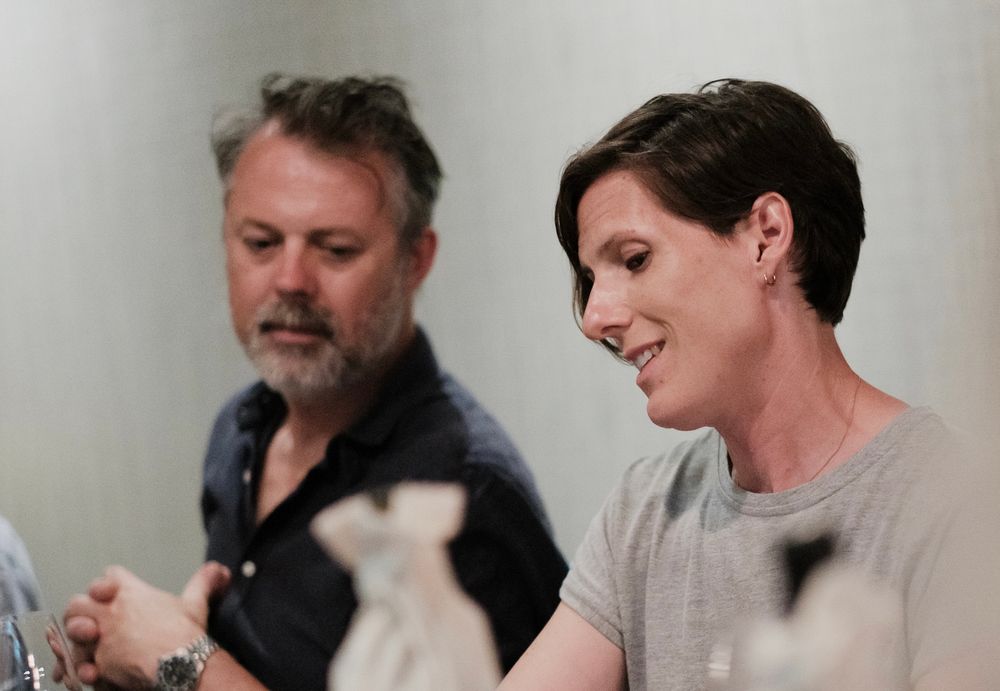
Jeroboams Lucie Parker says Santorini has really helped push Assyrtiko out to the trade and consumers
“Consumers are definitely getting the message about Assyrtiko,” says Daniel, but questions how aware they are of the distinction and difference between those produced on Santorini and those coming from other areas of Greece. Whilst, he argues Assyrtiko from Santorini can be compared to Puligny Montrachet, a mainland Assyrtiko is more akin to a generic Chardonnay.
Lewis says Enotria has only recently introduced PDO Santorini wines into its portfolio, although it has been offering Greek wines for some time. “We started with Greek wine about five years ago, started with mainland Assyrtiko, and have moved to Santorini much more recently,” he says.
Food matching

Mattia Scarpazza says the food friendly nature of Santorini wines makes them a dream for sommeliers to work with. Photo Thomas Skovsende.
All the panel agreed that PDO Santorini’s wines are something of a sommeliers’ dream, making the ideal match with food. “Santorini definitely has its place on a wine list,” says Mattia Scarpazza, sommelier at private members club, 67 Pall Mall and formerly of Petersham Nurseries. “It has a story to tell about the region, and the wines are very well suited for pairing with food and drinking in general. However, it can be difficult to understand as the sheer breadth of styles from a single grape variety grown on a tiny island is incredible.”
Klearhos Kanellakis, sommelier at Ekstedt at the Yard is also a big fan of PDO Santorini’s wines for their ability to pair well with food, and includes seven white wines from the island by the bottle and one by the glass on his list. “Wines from Santorini are gastronomic,” he declares. “Assyrtiko works well with many different cuisines, and not just Greek. For example, it works with Mediterranean, Asian, or Scandinavian – like our project at Eksted.”
He has found that a good way to introduce customers to the grape is by offering it by the glass, or by including it in wine pairings. “Santorini has a nice story to tell because of its volcanic soils,” he says, adding that he is currently running a themed volcanic wine pairing at Ekstedt, which includes a wine from PDO Santorini alongside other offerings from Tenerife, the Azores, Sicily and Madeira. “For more themed pairings, I have Santorini in mind for its ungrafted vines and its very old vines. It ticks many boxes when it comes to thematic pairing- tastings.”
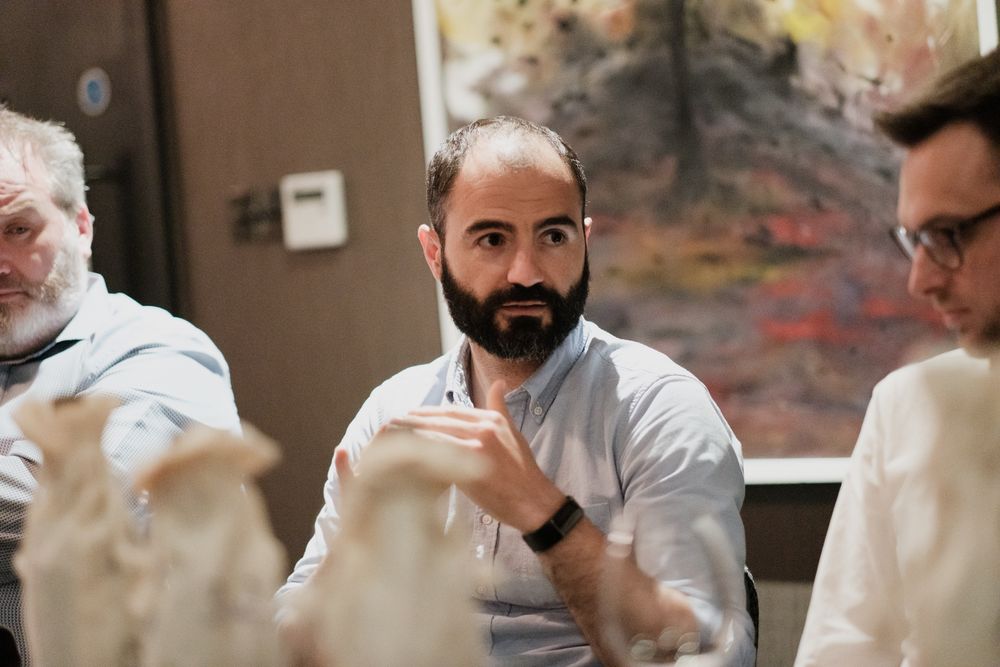
Klearhos Kanellakis is keen to list Santorini wines at Ekstedt at the Yard. Photo Thomas Skovsende
“I don’t have the simple varietal expression on my menu but I highlight the second and top tier of the pyramid [the three tiers of quality] with styles of Assyrtiko such as Nykteri, single vineyards and some premium cuvees coming from different parts of the island, vinified differently – some with oak, wild yeast, lees ageing, concrete eggs. I think that’s where the magic happens.”
As for pricing, Kanellakis believes that as a relative newcomer to the UK the market for PDO Santorini Assyrtiko has to first establish the brand with prices that are close to but not higher than more established areas that it can be justifiably compared to – pointing to Burgundy, Germany, Austria and Spain. “Further down the road you can gradually increase the prices when people know what Santorini can give. Price wise Santorini has done extremely well in just a few years without any marketing budgets behind it. It was just the passion of professionals spreading the word to each other.”
He warns of the danger of pricing Santorni wine too high, saying he wouldn’t want to see it become more expensive than Burgundy, for example. “That would destroy the good momentum that it has right now in London,” he says. “It wouldn’t be consumed as often and wouldn’t be discussed so much.”

Flavio Pinto says he is able to support what Santorini is doing at Bacchanalia which specialises in food and wine from across the Mediterranean. Photo Thomas Skovsende
However, he says that Santorini is currently the first place that springs to guests’ minds when talking about Greek wines, with alternative Greek varieties only slowly catching up. “The wines are getting better year after year and maybe in less than a decade we will have more established regions of Greece here in London.”
To achieve this he says will require around six or seven producers per region to perform at a similar level to that of PDO Santorini’s producers, with Crete, the Aegean islands and the Peloponnese all holding great potential. “I can’t wait to see what the new generation of winemakers has to offer now they are taking over,” he says. “Most of the young winemakers have travelled and studied abroad and come back with great knowledge and with tools on how to work on the land and the local varieties.”
Future for PDO Santorini
Steve Daniel believes PDO Santorini is currently half way through its journey from its humble beginnings as an entry level offering to the internationally renowned wine island it has become.

Steve Daniel says the exciting thing for Santorini is that there is so much more to come from the island its winemaking. Photo Thomas Skovsende
“It’s difficult to see where Santorini goes from here,” he says. “It is not at the beginning of its journey, as it has been trundling along its path for 20 odd years now. But the main thing now is the sense of place. Santorini is not like Chablis which has hundreds of producers and thousands of hectares of vineyards. I think it is already at the top of its trajectory in terms of growth, and we are talking to educated consumers. The average consumer just isn’t going to take a punt on a £30 bottle of Assyrtiko from Santorni, though they will certainly do so on Aldi’s £6.99 version – and a lot of them have.”
Another way for PDO Santorini to further progress could be by creating a stronger sense of place, which could come from introducting a classification system, claims Lithgow. “They are doing the right things in Santorini to establish that sense of place synonymous with premium wine,” he says.
“And there seems to be a growing emphasis from various producers on single vineyard wines and single village wines, so that expression of terroir would be the logical next step I guess by identifying vineyards of merit and giving them a grand cru rating, be that by village or area. Obviously this would be a long term piece of work and require the buy-in of all the vineyards which might cause issues if one of them didn’t have access to vines in certain areas. But I think it is all about creating a more detailed sense of place which would definitely help.”

The panel said the next step for Santorini is to drill deeper into what makes its wines unique, but also to identify the styles being made in different parts of the island. Photo Thomas Skovsende
Lithgow says he would also like to see more work done to explain and educate buyers on how the wines differ depending on which part of the island they come from and why there are such big style differences in different parts of the island. “We can then start looking for those nuances in the glass,” he says.
However, there was the general consensus that producers should focus on the strong, premium brand of PDO Santorini, rather than confusing the message with subzones at this point.
There was also a strong consensus amongst the panel in the value and power of Santorini’s main producers working in a more collaborative fashion, rather than viewing each other as potential rivals.
Lithgow says they should look closely at South Africa and Australia’s young producers as good examples of how this can work. “Theirs is a masterclass in turning nothing into something,” he says
The final word goes to Daniel who says it’s vital the story about PDO Santorini and its wine keeps getting told. “It won’t sell itself, it’s all about educating the gatekeepers about Santorini and getting them to spread the word. A lot of the donkey work has already been done, but it’s all in the fine tuning now,” he claims.
“It’s a completely different beast to what it was when I first started out.”
- All photography by Thomas Skovsende. You can find more of his work at his website here.

This project was supported by Wines of Santorini and funding from the EU
